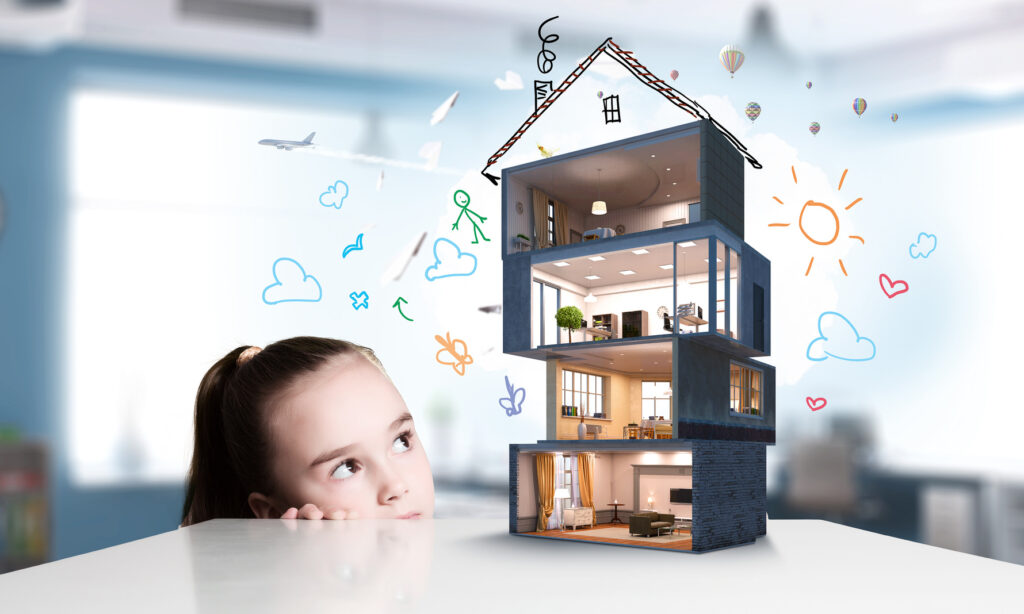Intruders, too, look forward to the nicest time of the year
Summer vacation is here at last – your flight is booked and your bags are packed. But beware: it isn’t just us law-abiding citizens who look forward to a fun time and a well-earned rest. Criminals, too, are eagerly awaiting all those temporarily abandoned houses and empty apartments. It’s no coincidence that the risk of burglary increases abruptly during the vacation period. While we’re away enjoying ourselves, intruders can set about their business undisturbed. It often takes them no more than a few seconds to open windows and doors. On the other hand – and this is one big thing in common with plant security – modern security technology coupled with appropriate awareness and foresight can reduce the risks to a minimum.
Prevention is the best recipe
Prevention is invariably better than cure. Admittedly, you have to face up to the fact that no house or apartment can ever be one-hundred-percent secure. Yet by taking the right measures and being open to advanced technologies, you can at least severely mitigate the threat of break-in.
A glance at the statistics suffices to show what a serious threat this kind of crime poses: according to the latest Police Crime Statistics of Germany 2017 (published in April 2018), a total of 116,540 home burglaries were reported last year.
Open doors are also an invitation to cybercriminals
Cybercrime is just as much a growing problem as “conventional” crime. The police definition is very wide here, covering any offense that is committed using computers or software. Altogether, 108,510 such offenses were registered last year (Police Crime Statistics of Germany 2017, published in April 2018). The number of unreported cases varies according to the type of offense. Many victims of cybercrime, for instance, are not even aware that their data has been stolen and so, not surprisingly, never press charges.
The first two steps to better intruder detection: private homes versus company assets
1. Increased risk consciousness – awareness of intrusion threats
The first step is to raise the general awareness of home security issues among all family members. So what’s the best way to go about it?
You could start with a list of don’ts:
… Don’t tell strangers that you’re going to be absent for a while (that’s priceless information for any criminal).
… Don’t publicize your vacation dates for all to hear on your answering machine.
… Don’t announce your vacation plans in social media or networks like Facebook or Twitter. Online profiles that are not properly protected make it particularly easy to spy out information – it’s like handing the address of your empty apartment to a potential burglar on a plate.
The same goes for cybercrime. The first step is to raise the general awareness of cyber security issues – especially social engineering – among all employees. Social engineering entails targeting victims and manipulating them in a subtle way. These targets then do things they would never dream of doing if they weren’t being misled by an scammer.
‘Awareness seminars’ are an excellent way to familiarize your staff with current cybercrime methods and practices. They also demonstrate how cybercriminals install malware and gain access to highly sensitive data. Is this something you’re seeking to avoid? Click here to go to our cyber security seminars
2. Checklist of the weaknesses in or around your house or apartment
Intruders know all the typical weaknesses, and they know how to exploit them relatively easily to gain access to your home – from back gardens through tilted windows to unprotected main or patio doors. You need to identify these vulnerabilities as soon as possible and take suitable action to remove them. Any criminal, whether an intruder searching for a way into your house or apartment or a hacker planning a cyber attack, is more likely to strike if presented with an easy, low-risk target.
It’s for precisely this reason that more and more companies nowadays are opting to have their complete infrastructure detected by means of a detailed risk assessment (DRA) as a preventive step. Any weaknesses in the technical infrastructure are thus identified early on, so that made-to-measure precautions can be taken depending on the desired security assurance level (SAL).
In the second and final part of this blog post you can learn which security instruments make particular sense when it comes to protecting your own home or your own assets.




